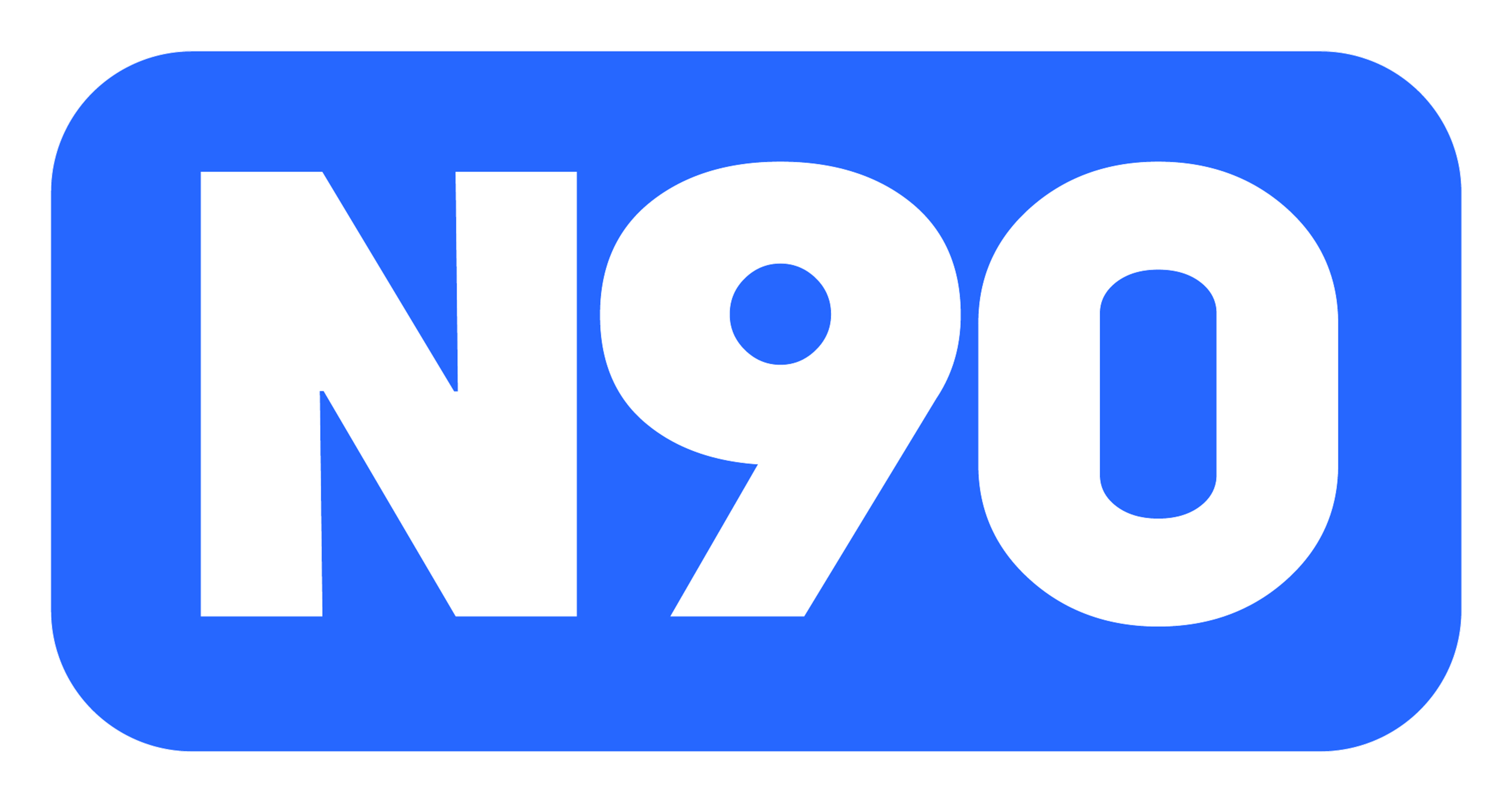Running a small and medium sized business in the Philippines means facing unique opportunities and financial hurdles. With over 99% of Philippine businesses classified as MSMEs, many like yours drive job creation and economic growth. Yet, you share a common challenge: access to working capital and expansion funds. Despite a staggering ₱221 billion demand for formal credit, only about ₱15 billion is available for SMEs, and banks devote just 4.52% of their portfolios to small business lending.
If you are seeking practical information on loan types, eligibility, application processes, and lender comparisons, you are in the right place. This guide will equip you with insights to choose and secure the right small business loan for your growth goals.
TL;DR:
- Small business loans help MSMEs in the Philippines grow, stabilize cash flow, and stay competitive.
- Loan types include term loans, credit lines, secured/unsecured loans, and startup funding, each suited for different needs.
- Eligibility depends on your financial health, credit score, documents, and business type.
- Application tips: Check your credit, choose the right lender, and prepare financial documents and a solid business plan.
- Alternatives like invoice financing, crowdfunding, and P2P lending are also viable for those who don’t qualify for traditional loans.
What is Small Business Loans?
A small business loan is a type of financing specifically designed to help small and medium enterprises (SMEs) access the funds they need to start, grow, or sustain their operations. These loans are typically provided by banks, financial institutions, or alternative lenders and come with terms that fit the unique requirements of smaller businesses.
Now that you know what small business loans are, let’s explore how they function.
How Small Business Loans Work?
Small business owners apply for funding by submitting financial documents and business information to the lender. The lender then evaluates the application based on factors like creditworthiness, business revenue, and purpose of funds. Upon approval, the agreed loan amount is disbursed to the business, and repayments begin according to the specified schedule, which may be monthly, quarterly, or tailored to the business’s cash flow.
Having explored how small business loans function, it is equally important to understand their role in supporting business growth, stability, and long-term success.
Importance of Small Business Loans
Small business loans play a pivotal role in helping businesses grow, survive, and thrive. For many small businesses, securing a loan is often the only way to fund expansions, manage cash flow, or invest in new equipment or technology.
1. Driving Business Growth and Expansion
Small business loans empower you to purchase equipment, open new branches, or invest in technology, giving your business the resources it needs to grow or diversify. With the right funding, you can confidently seize market opportunities or quickly adapt to changing customer needs.
2. Supporting Economic Development
In the Philippines, over 99% of businesses are micro, small, and medium enterprises (MSMEs). These businesses are crucial to job creation, contributing to 62.4% of the nation’s total workforce. By securing a loan, you’re not only investing in your business but also supporting economic development and employment in your community.
3. Maintaining Cash Flow Stability
Access to working capital through loans helps you cover operational expenses such as payroll, rent, and inventory, especially during slow sales periods or seasonal dips. This ensures business continuity even when your revenue fluctuates.
4. Enabling Innovation and Competitiveness
Loans let you invest in product development, process improvements, or new business models, helping your company stay competitive and relevant in your industry. Funding from lenders or government programs often targets innovation initiatives.
5. Flexibility to Address Business Needs
Flexible loan programs, for example, multipurpose business loans, let you allocate funds where your business needs them most, whether that’s covering orders, upgrading inventory, or settling urgent payables. Many lenders in the Philippines offer repayment terms, grace periods, or multiple drawdowns to fit your cash flow.
6. Reviving and Sustaining Businesses in Challenging Times
When your business faces unexpected expenses, downturns, or disruptions, a loan can act as a lifeline, helping you bridge the gap and keep operations afloat. Many government and bank loan programs are designed to support SMEs during financial challenges.
With their importance clear, the next step is understanding the loan options available to fit your unique business needs.
Types of Small Business Loans in the Philippines
Below are detailed discussions on the most common types of small business loans in the Philippines, which cater to different business needs, financing amounts, and repayment terms.
1. Term Loan
Purpose: Term loans are ideal for businesses looking to fund specific projects, such as purchasing equipment, expanding operations, or funding business acquisitions.
- Loan Amount: Generally ranges from ₱100,000 to ₱20 million or more, depending on the lender and the business's financial status.
- Repayment Terms: Typically, term loans have fixed repayment periods ranging from 1 to 7 years. The loan term is set based on the loan amount and the purpose.
- Eligibility: Lenders usually require proof of business stability, including financial statements, business plans, and sometimes collateral.
- Features: Term loans offer businesses a lump sum of capital that must be repaid in regular installments over the loan period. The interest rate can either be fixed or variable, depending on the lender and agreement.
Term loans are suitable for businesses that need substantial funding for specific needs but can handle long-term repayment schedules. They provide predictable repayment terms, which can help businesses plan their cash flow.
2. Credit Line
Purpose: A credit line provides businesses with flexible access to funds for various purposes, including managing cash flow, covering operating expenses, and dealing with emergencies.
- Loan Amount: Credit lines typically range from ₱50,000 to ₱20 million or more, depending on the lender and the borrower’s financial profile.
- Repayment Terms: A credit line offers flexibility, interest is charged only on the amount used, and businesses can repay the borrowed amount anytime without fixed installments.
- Eligibility: Lenders evaluate the business’s creditworthiness, financial statements, and history of cash flow management. Collateral may or may not be required, depending on the lender.
- Features: Unlike a traditional loan, a credit line offers businesses access to funds up to a certain limit. The borrower can withdraw funds as needed, and once repaid, the credit line is replenished. This revolving credit feature provides businesses with quick access to capital without the need to reapply.
A credit line is perfect for businesses with fluctuating capital needs or those that want the flexibility to borrow funds when necessary, without having to secure a lump sum amount.
3. Secured Loan
Purpose: Secured loans are typically used for large financing needs such as purchasing equipment, real estate, or funding expansion. These loans require collateral to back the loan.
- Loan Amount: The loan amount depends on the value of the collateral provided, and can range from ₱500,000 to ₱35 million.
- Repayment Terms: Secured loans usually have longer repayment terms, ranging from 1 to 7 years, depending on the agreement and loan amount.
- Eligibility: Borrowers must provide valuable assets such as property, equipment, or accounts receivable as collateral to secure the loan.
- Features: If the borrower defaults on the loan, the lender has the right to seize the collateral to recover the loan amount. Since secured loans involve lower risk for the lender, they often come with lower interest rates compared to unsecured loans.
Secured loans are beneficial for businesses that have valuable assets but may have limited credit history. They offer larger loan amounts and better interest rates but come with the risk of losing assets in case of non-payment.
4. Unsecured Loan
Purpose: Unsecured loans are ideal for businesses that need quick funding but do not have the assets to offer as collateral.
- Loan Amount: Typically ranges from ₱50,000 to ₱5 million or more, depending on the lender and the business’s financial standing.
- Repayment Terms: Repayment terms can range from 1 to 5 years, with either fixed or flexible repayment schedules depending on the lender and loan agreement.
- Eligibility: Lenders evaluate the borrower’s creditworthiness, business performance, and cash flow. No collateral is required, but the interest rates are typically higher than secured loans.
- Features: Unsecured loans offer businesses the ability to access funds without having to risk any assets. However, because the lender has no collateral to claim in the event of a default, interest rates tend to be higher compared to secured loans.
These loans are ideal for businesses with solid financial performance but limited assets. They provide quick access to capital without the risk of losing valuable property or assets.
5. Startup Loans (New Business Loan)
Purpose: Startup loans are designed to help new businesses fund their initial operations, including setting up their infrastructure, marketing, and hiring employees.
- Loan Amount: The loan amount can range from ₱50,000 to ₱5 million, depending on the lender and the nature of the business.
- Repayment Terms: Typically, startup loans offer shorter repayment terms, usually 1 to 2 years. However, some loans come with a grace period before repayments begin.
- Eligibility: Startups often need to provide a strong business plan, proof of market research, and projections for business growth. In some cases, personal guarantees from the business owners may be required.
- Features: These loans are generally riskier for lenders, so they may come with higher interest rates and stricter eligibility criteria. Some government-backed programs, such as the Department of Trade and Industry’s (DTI) financing programs, may offer lower interest rates for eligible businesses.
Startup loans are essential for entrepreneurs who are just starting their businesses and need capital to get their operations off the ground. Once you’ve identified the right type of loan, here’s how you can navigate the application process successfully.
Suggested Read: How a Business Loan Works for Your Company's Finance
How to Apply for a Small Business Loan in the Philippines?
Securing a small business loan requires careful preparation and understanding of the process. While each lender may have different requirements, the general steps remain the same. Below is a step-by-step guide to help you qualify for a small business loan:
1. Evaluate Your Business’s Financial Health
Before applying for a loan, assess the financial health of your business. This includes reviewing your revenue, expenses, and overall cash flow. Lenders typically prefer businesses with stable and consistent financials, so it’s crucial to have a clear picture of your finances. Make sure to:
- Review your financial statements (balance sheet, income statement, and cash flow statements).
- Calculate your current debt-to-income ratio.
- Ensure that your business has enough cash flow to cover loan repayments along with other operational expenses.
2. Determine the Type of Loan You Need
Understand the purpose of the loan and the amount you need before applying. The type of loan you choose will affect your qualification process and the documentation required. Here are a few questions to ask yourself:
- Are you funding an expansion (term loan)?
- Do you need a flexible line of credit for working capital?
- Do you have assets to offer as collateral (secured loan)?
- Are you a startup needing initial funding (startup loan)?
Knowing exactly what type of loan you need will help you focus on lenders that specialize in those offerings, streamlining the application process.
3. Prepare the Required Documents
Lenders will ask for certain documents to verify your business’s financial standing and ability to repay the loan. It’s crucial to have these ready in advance. The documents typically required include:
- Business registration and legal documents (DTI/SEC registration, business permits, etc.)
- Recent tax returns and financial statements (income statements, balance sheets, etc.)
- A well-crafted business plan or project proposal
- Collateral documents (for secured loans) or personal guarantee details (for unsecured loans)
Having these documents organized and up to date will show the lender that you are serious about your loan application and prepared for the process.
4. Check Your Creditworthiness
Your personal and business credit scores will play a significant role in the loan approval process, especially for unsecured loans. Check both your personal and business credit reports to identify any potential issues or errors.
- Personal Credit Score: Many lenders use the borrower’s personal credit score to assess the risk. Ensure that your personal credit score is in good standing by paying off any outstanding debts and ensuring timely payments on existing credit obligations.
- Business Credit Score: Some financial institutions also assess your business credit score. If your business is new and has no credit history, the lender will look at your personal credit score instead.
If your credit score is lower than expected, work on improving it before applying for the loan to increase your chances of approval.
5. Choose the Right Lender
Not all lenders are the same, so it’s important to choose one that aligns with your business needs. Consider factors such as interest rates, loan amounts, repayment terms, and whether you’re eligible for government-backed or traditional bank loans.
- Commercial Banks: Generally provide large loan amounts and long repayment terms, but may require more stringent requirements.
- Government-Backed Programs: Offer lower interest rates and better terms but may have limited availability or funding for specific industries.
- Microfinance Institutions: Offer smaller loans for startups or businesses with limited credit history, usually with less stringent requirements.
Research the pros and cons of each lender and select one that offers the best terms for your business.
6. Submit Your Loan Application
Once you’ve gathered all the required documents and chosen a lender, it’s time to submit your loan application. Be thorough when filling out your application, ensuring that all the information is accurate and complete. Incomplete or incorrect applications can delay the approval process.
- Provide detailed information about how you intend to use the loan and your plans for repaying it.
- If necessary, follow up with the lender to ensure they received all documents and information required.
7. Prepare for the Interview or Site Visit
Some lenders may require an interview or a site visit as part of their loan approval process. During the interview, be prepared to discuss your business operations, financials, and repayment plans in detail.
- Be transparent and confident in presenting your business plan and how the loan will help your business grow.
- Be ready to answer questions related to your industry, competition, and market trends.
8. Review the Loan Terms
If your loan application is approved, carefully review the loan terms before accepting the offer. Pay close attention to:
- The interest rate and whether it is fixed or variable.
- The repayment schedule and duration.
- Any additional fees or charges associated with the loan.
- The collateral or personal guarantees required (for secured loans).
Ensure that you fully understand the terms and conditions before committing to the loan.
By following these steps, you can increase your chances of securing the financing necessary to grow and sustain your business. Proper planning, transparency, and organization are key factors in navigating the loan application process successfully.
Suggested Read: Steps and Documents Required to Start a Business in the Philippines
Tips to Improve Your Chances of Approval
Getting your loan application approved often comes down to the preparation you put in beforehand. Here are some tips to help improve your chances:
- Strengthen Your Credit Score: If you’re applying for an unsecured loan, it’s essential to ensure your personal credit score is in good shape. Pay off outstanding debts, keep credit card balances low, and avoid missing payments to improve your score. A higher score makes you more attractive to lenders.
- Build a Solid Financial History: Lenders appreciate businesses with strong, transparent financial records. If you’ve been in business for a while, ensure that your books are up-to-date. If you’re a startup, focus on creating a solid financial forecast and be transparent about your financial projections.
- Prepare a Clear and Feasible Business Plan: Especially if you’re a new business or applying for a large loan, a well-thought-out business plan is essential. Be clear about your business’s vision, how the loan will be used, and how you plan to repay it. Offering a comprehensive plan shows that you’re serious and prepared.
Always remember that lenders are looking for businesses that demonstrate financial stability, potential for growth, and the ability to repay the loan on time.
If traditional loans don’t seem like the right fit, you still have flexible alternatives to consider.
What are the Alternatives to Small Business Loans?
Traditional loans aren’t always the best fit for every business. Alternative financing provides quick, flexible solutions, especially if you need fast approval or cannot meet strict bank requirements. Here are some key options you can explore as an SMB in the Philippines:
- Invoice Financing: Invoice financing allows businesses to access immediate capital by using unpaid invoices as collateral. This is an excellent option for companies that have slow-paying clients and need funds quickly to maintain operations. platforms like n90 provide tailored financing solutions for SMEs, ensuring that businesses can access the capital they need to thrive, especially when dealing with delayed payments from clients.
- Equipment Financing: Tailored for purchasing machinery, vehicles, or technology needed to run or expand your business. The equipment itself usually serves as collateral, allowing for easier approval and larger loan amounts. Loan terms and amounts match the equipment’s value and your repayment capacity.
- Crowdfunding Platforms: You can raise capital directly from the public by pitching your business idea on crowdfunding websites. Supporters contribute small amounts, which can add up to significant funding. Some platforms offer equity to investors, while others focus on donations or pre-selling products.
- Venture Capital and Angel Investors: If your business has high growth potential, you might attract angel investors (individuals) or venture capitalists (investment firms) who provide substantial capital in exchange for equity. They offer not just funds but valuable guidance and industry connections. Be ready to share ownership and involve investors in big decisions.
- Peer-to-Peer (P2P) Lending: P2P lending platforms connect you with individual investors willing to fund businesses. Application is usually online, with faster processing and less stringent criteria than banks. You repay with agreed interest, often at competitive rates, making it a viable choice if you want to bypass traditional intermediaries.
- Microloans: Microfinance institutions offer smaller loans, accessible to businesses in underserved or rural communities. These loans feature flexible requirements, smaller amounts, and short repayment terms, making them ideal for startups and microenterprises aiming for incremental growth.
Each alternative funding route offers unique benefits and is well-suited for specific business needs, whether you’re covering urgent expenses, investing in growth, or launching a new venture.
One standout option in the Philippine SME space is n90, here’s how it simplifies and speeds up business lending.
How n90 Simplifies Loan Options for Small Businesses?
n90 stands out by specifically addressing the pain points that Filipino SMEs face in securing business loans. Unlike traditional banks that require stringent documentation, lengthy processes, and rigid collateral terms, n90’s approach is built on accessibility, speed, and transparency.
- Tailored Lending Solutions: n90 offers a suite of products—Bridge Loans for covering short-term cash flow gaps or seizing growth opportunities, Small Business Loans for expansion and working capital, and Invoice Financing for unlocking cash tied up in receivables.
Flexible Limits and Competitive Rates
n90 makes funding accessible to businesses at every stage of growth:
- If your company earns above ₱150 million annually, you can access up to ₱25 million at rates below 1% monthly.
- For revenues between ₱15 million and ₱150 million, you can borrow ₱1 million up to ₱10 million, with rates from 1.09% to 1.49%.
- Even with revenues below ₱15 million, you can qualify for up to ₱1.5 million at 1.50%–1.90% monthly.
With flexible loan options, quick access to capital, and a relationship-focused approach, n90 makes it possible for Filipino SMEs to overcome financing hurdles and invest in the future, helping businesses like yours grow, compete, and thrive
Conclusion
Securing the right financing can make a significant difference in how your business grows, survives challenges, or scales new opportunities. As an SME in the Philippines, understanding your loan options, from traditional bank loans to flexible alternatives like invoice financing, equips you to make smarter financial decisions. Whether you're managing cash flow, buying inventory, or funding expansion, the right solution is within reach.
Looking for fast, flexible financing? n90 offers tailored loan options with transparent terms and approvals in as fast as 24 hours. Speak to us at +63 962 663 1393 and make your business strive.
FAQs
1. What is the most common type of business loan for SMEs in the Philippines?
Term loans and credit lines are the most popular, offering lump-sum or revolving funds for business growth, equipment, or operational needs.
2. How much can I borrow as a small business owner?
Loan amounts typically range from ₱50,000 to ₱20 million+, depending on the type of loan, lender, and your business’s financial profile.
3. Do I need collateral to apply for a small business loan?
It depends. Secured loans require collateral (like property or equipment), while unsecured loans don’t, but may have higher interest rates.
4. Can I get a business loan if I just started my company?
Yes, startup loans are available, though they usually require a strong business plan, proof of market potential, and sometimes a personal guarantee.
5. What are good alternatives if I don’t qualify for a bank loan?
Consider invoice financing, equipment loans, crowdfunding, P2P lending, or microloans; they're more flexible and accessible for new or underserved businesses.













